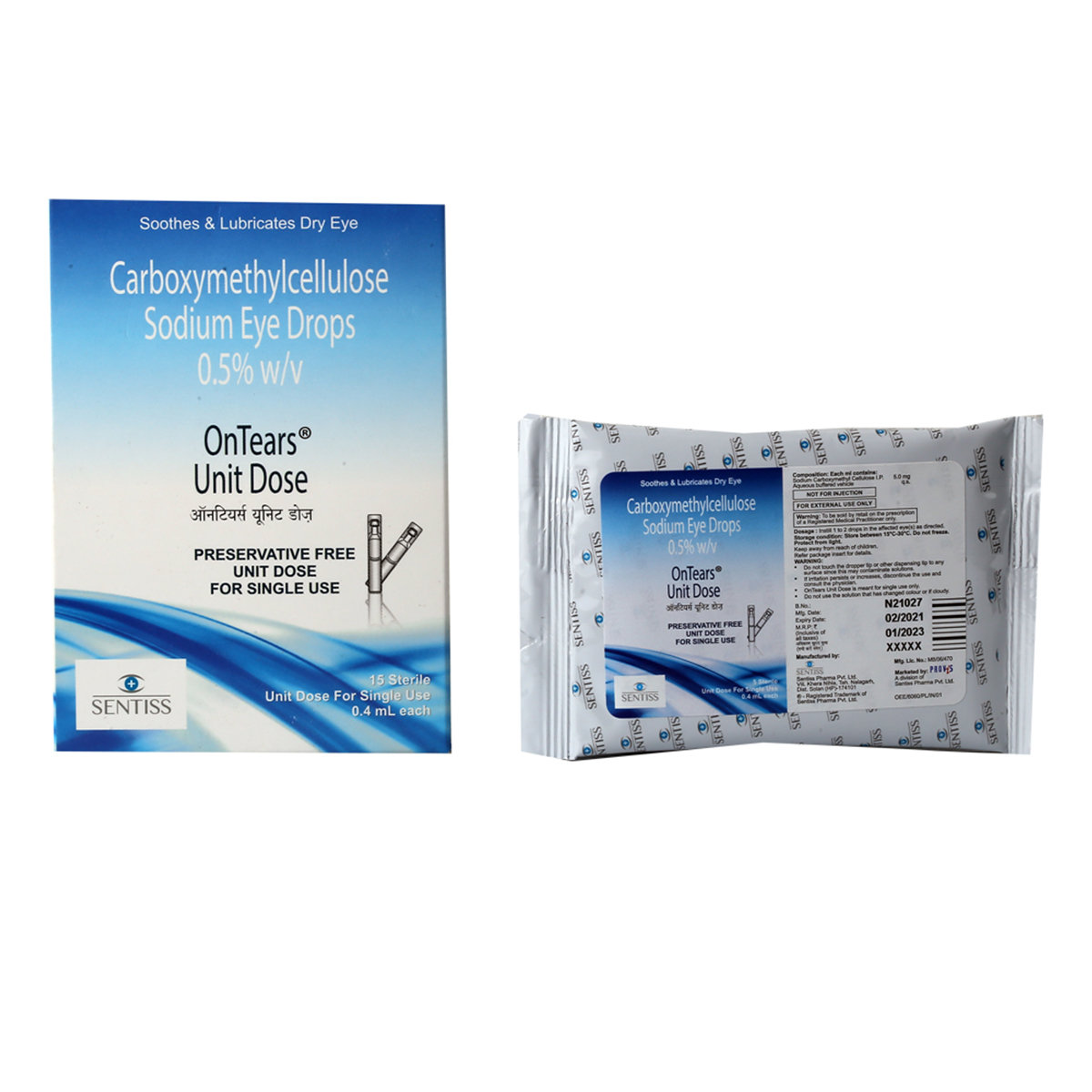Sodium Carboxymethylcellulose
About Sodium Carboxymethylcellulose
Sodium Carboxymethylcellulose is used to treat dry eyes. A dry eye is an eye condition that occurs when your tears are unable to provide ample lubrication for the eyes. Symptoms include a burning sensation, sensitivity to light, red eyes, a feeling of something in your eyes, watery eyes, and blurred vision.
Sodium Carboxymethylcellulose contains sodium carboxymethylcellulose, an eye lubricant. It works similarly to natural tears and provides temporary relief from burning sensation and discomfort by providing lubrication of the eyes and acting as a protectant against further irritation.
The most common side effects of Sodium Carboxymethylcellulose are irritation, itching, and blurred vision. They do not require medical attention and gradually resolve over time. However, if the side effects are persistent, reach out to your doctor.
Sodium Carboxymethylcellulose is for ophthalmic use only. If you wear contact lenses or are wearing them, remove them before using Sodium Carboxymethylcellulose, and you can put them back 15 minutes after using Sodium Carboxymethylcellulose. Inform your doctor if you are pregnant or breastfeeding, allergic to this medicine, or taking any other medication.
Uses of Sodium Carboxymethylcellulose
Medicinal Benefits
- Sodium Carboxymethylcellulose is an eye lubricant, also known as artificial tears. It helps treat dry eyes.
- It works similarly to natural tears and provides temporary relief from burning and discomfort due to the eye's dryness.
- It maintains proper lubrication of the eyes and acts as a protectant against further irritation.
Directions for Use
- Follow your doctor’s instructions on the dosage and timing of this medication to ensure safe and effective use.
- Lie down and tilt your head backwards. Pull your lower eyelid gently with your index finger to form a pocket. Instill the number of drops advised by the doctor into the pocket of the lower eyelid. Close your eyes for 1-2 minutes.
- Sodium Carboxymethylcellulose is for ophthalmic use only.
- Avoid touching the container tip to your eye or lids to prevent contamination.
Storage
Side Effects of Sodium Carboxymethylcellulose
- Itching
- Irritation
- Eye discomfort
- Burning sensation
Drug Warnings
- Do not use Sodium Carboxymethylcellulose if you are allergic to any of its ingredients.
- Avoid touching the eyedropper with your bare hands or the eyelids when administering drops, as it may cause contamination.
- Replace the cap tightly after each use.
- Do not use the solution if it changes colour or appears cloudy.
- Consult a doctor if you experience eye pain, vision changes, continued redness, or eye irritation.
Drug Interactions
Drug-Drug Interactions: No interactions found.
Drug-Food Interactions: No interactions found.
Drug-Disease Interactions: No interactions found.
Drug-Drug Interactions Checker List:
Safety Advice

Alcohol
consult your doctorIt is not known whether Sodium Carboxymethylcellulose interacts with alcohol. Please consult your doctor.

Pregnancy
consult your doctorConsult your doctor before using the Sodium Carboxymethylcellulose if you are pregnant.

Breast Feeding
consult your doctorConsult your doctor before using Sodium Carboxymethylcellulose if you are breastfeeding.

Driving
cautionSodium Carboxymethylcellulose may cause temporary blurring of vision. Wait until your vision is clear before driving or using machinery.

Liver
consult your doctorPlease consult your doctor before using the Sodium Carboxymethylcellulose if you have a liver impairment or any concerns regarding this.

Kidney
consult your doctorPlease consult your doctor before using Sodium Carboxymethylcellulose if you have kidney impairment or any concerns regarding this.

Children
cautionSodium Carboxymethylcellulose is not recommended for children below three years.
Habit Forming
Diet & Lifestyle Advise
- Always use clean towels or tissues to wipe your eyes and face.
- Regularly wash and change the pillowcases.
- If you wear contact lenses, Clean and replace them more often. Never share contact lenses. Always remember to wash your hands before inserting the contact lens.
- Avoid staring at digital screens for longer durations. Rest your eyes every 20 minutes.
- Blink regularly as it helps spread hydrating substances such as mucus and tears across the eyes.
Patients Concern
Disease/Condition Glossary
Dry eye: Dry eye is a common condition that occurs when your tears cannot provide adequate lubrication for your eyes. The tearing instability leads to inflammation and damage to the eye's surface. Symptoms include a burning sensation, sensitivity to light, eye redness, a sensation of having something in your eyes, watery eyes, and blurred vision.
FAQs
Sodium Carboxymethylcellulose belongs to the group of ophthalmic medications primarily used to treat dry eyes. A dry eye is an eye condition that occurs when your tears are unable to provide ample lubrication for the eyes.
Sodium Carboxymethylcellulose works similarly to natural tears and provides temporary relief from burning and discomfort due to the eye's dryness by maintaining proper lubrication of the eyes.
You should not use Sodium Carboxymethylcellulose if you are wearing contact lenses. If you wear contact lenses or are wearing them, remove them before using Sodium Carboxymethylcellulose, and you can put them back 15 minutes after using Sodium Carboxymethylcellulose.
No, Sodium Carboxymethylcellulose should not be used simultaneously with other eye medications. At least a gap of 5 to 10 minutes should be maintained between two eye medications.
Yes, using Sodium Carboxymethylcellulose can cause temporary blurry vision. So, please do not drive or operate machinery until your vision is clear.
Though Sodium Carboxymethylcellulose can be used as frequently as needed, it is advised to use Sodium Carboxymethylcellulose as suggested by the doctor.
Yes, Sodium Carboxymethylcellulose can be used at night. It soothes the eyes and provides moisturisation.
The most common side effects of Sodium Carboxymethylcellulose are irritation, itching, and blurred vision. They do not require medical attention and gradually resolve over time. However, if the side effects are persistent, reach out to your doctor.
Store Sodium Carboxymethylcellulose at room temperature, in a dry place. Keep out of sight and reach of children.
Shake the bottle well before each use. Instil the eye drops by pulling down the lower eyelid to form a pocket between the eyelid and the eye. Your doctor will determine how long you need to use Sodium Carboxymethylcellulose based on your condition.
No, Sodium Carboxymethylcellulose is a safe medicine. It is a well-tolerated medicine and is not harmful.





